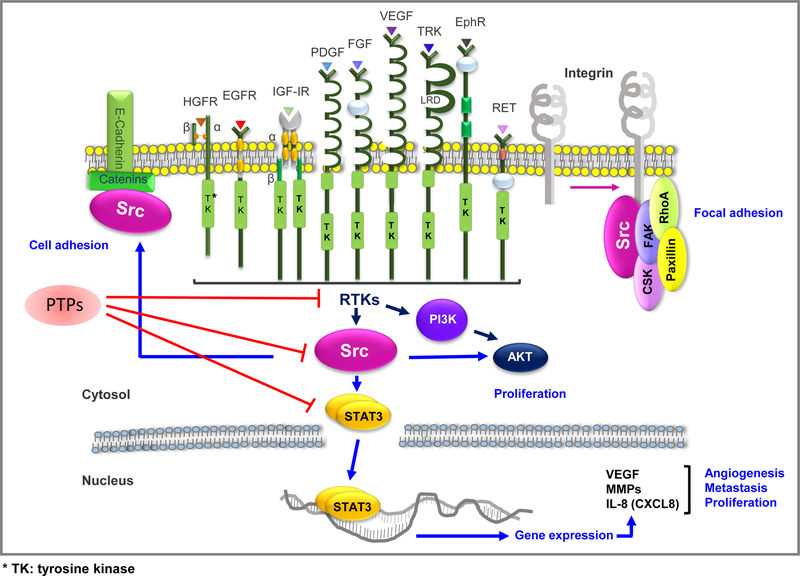Figure 4. The role of Src in cells.
Src may interact with a number of kinases which can regulate cell proliferation, migration, adhesion, and angiogenesis. RTKs can trigger the phosphorylation of the Src Tyr416 residue and promote activation of the transcription factor STAT3, which can regulate gene expression to stimulate cell migration, angiogenesis, and cell survival. PI3K activation following loss of PTEN may induce Src/AKT cascade signaling to enhance cell growth. Moreover, Src can mediate cell adhesion and migration by interacting with catenin or integrin/focal adhesion proteins, such as FAK, CSK, Paxillion, and RhoA.

